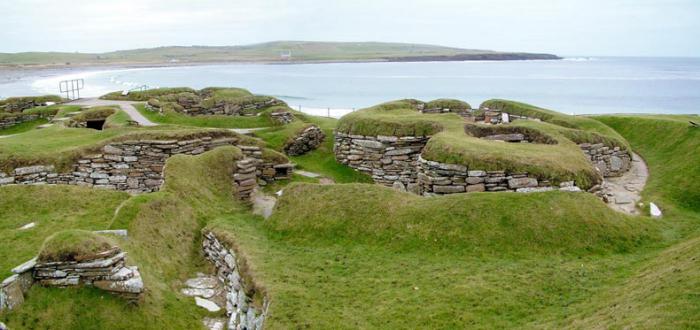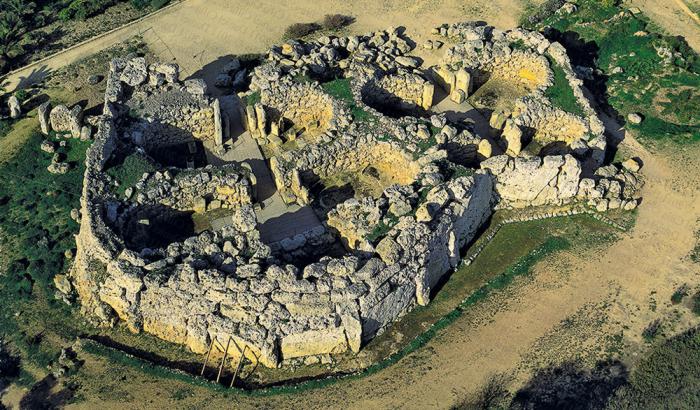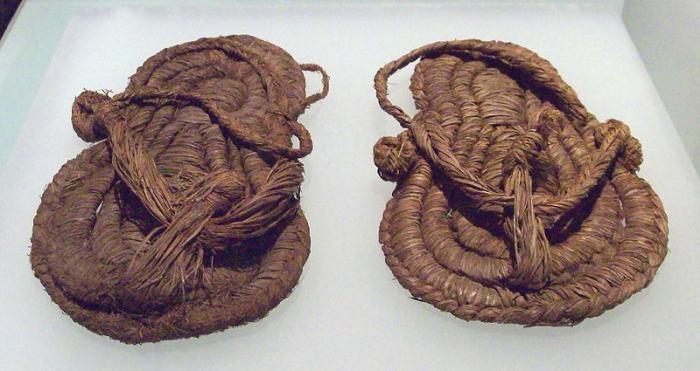What is neolithic? This term comes from the Greek words “neos” (new) and “lithos” (stone). Scientists call this term a new era in the development of mankind. In a word, Neolithic is the new-stone age, that is, the final stage of the Stone Age. And he, as you know, had three periods of development: initial, middle and new. Each of them has some special elements. Scientifically, these periods are called Paleolithic, Mesolithic, and finally Neolithic. The table of primitive history clearly shows the characteristic features of each.
| Title | Chronological framework | Types of activity and tools |
| Paleolithic | 3 million - 10 thousand BC e. | Hunting and gathering. Stone and wooden tools and weapons |
| Mesolithic | 10 thousand - 5 thousand BC e. | The construction of primitive dwellings, the manufacture of boats and rafts, the invention of bow and arrows |
| Neolithic | 5 thousand - 1 thousand BC e. | The transition from gathering to a producing type of economy (cattle breeding and farming). The emergence of crafts. The emergence of ceramic products. Tools - polished stone |
The famous nineteenth-century English archaeologist Lebbock called the Neolithic opposition the Paleolithic, another period of the Stone Age. Its characteristic features are the presence of polished and drilled tools.
When did the Neolithic period begin?
No one can name a specific start date for this era, as some cultures entered it earlier, and others later. The first peoples who took a step forward and rose to a new stage of historical development were people who lived in the Middle East for another 9.5 thousand years BC. It is with this period that the transition from the appropriating type of culture (gathering and hunting) to the producing one (cattle breeding, horticulture and agriculture) is associated. In the history of mankind, the Neolithic is considered a significant leap forward in comparison with the Mesolithic and Paleolithic. When studying the characteristic features of each of the periods of the Stone Age, you notice how much new has happened in the third, last period. However, humanity did not go beyond the invention of stone tools, even very skillfully and skillfully made, in this period of time. In short, the Neolithic era ends when metal tools replace stone tools. After this, as you know, the Bronze, Iron, and other centuries come. Nevertheless, there are still peoples in the world (American tribes and inhabitants of the islands of Oceania) who have not yet completely passed from the Neolithic into the Iron Age. And if we proceed from this, we can state that this period is not yet completely completed for humanity as a whole. In a word, neither the Iron Age nor the Neolithic are not chronological periods. As for our region, here this stage began around the fifth millennium BC and lasted until the third, that is, about 2000 years.

What has the neolithic era given to humanity?
Yes, a lot of things. For example, the tools, although made of stone, were not as primitive as during the Paleolithic and Mesolithic. They were polished, making the edges smoother and sharper; if necessary, holes were drilled in them (a primitive millstone). Neolithic people also engaged in weaving and made simple clothes and bedspreads for themselves, those who lived near rivers and lakes were engaged in fishing and other inhabitants of water bodies. Stocks of fish, as well as meat obtained through hunting, along with nuts, berries and different roots allowed primitive people to stay in the same area for a while, that is, from nomads to become settled. And this, in turn, led to the construction of small towns and then cities. The sedentary image also contributed to the birth of ceramics and pottery. The first attempts to use clay as a material for the manufacture of dishes and other utensils were made in the Middle East, in the villages of Jarmo, Chatal-Guyuk and Hajilar. But in the Far East, the Jomon culture was advanced. Residents of this area not only began to make and use ceramics, but also developed some varieties of garden and vegetable plants. As for the European part, in the early stage only in Greece there were Neolithic tribes.

The most ancient city in the world, originating in the Neolithic era
As already mentioned, the construction of the first cities began precisely during the New Stone Age. The oldest of them was Jericho. This occurred at the very end of the Mesolithic and the beginning of the Neolithic. The city was built on the banks of the Jordan River, in what is now Palestine. During the construction of the first cities, special emphasis was placed on siege fortifications. And this suggests that in those distant times, wars were fought between the cities. Consequently, regular armies were formed in which military officials stood out. In a word, Neolithic is a period when the first civilizations were born, as well as large settlements - fortified cities.
Neolithic revolution
Indeed, what happened in this historical period can be called a revolution. Firstly, it is the transition from the appropriating to the manufacturing economy, the emergence of ceramic products (for the first time in early Japanese culture), the emergence of cities, the formation of a professional army, the occupation of fishing and agriculture, etc.
Neolithic stages
Scientists distinguish three periods of development of this era: early, middle and late. As noted above, the regions in the Near and Far East should be assigned to the earliest, and Greece in the European part. The Middle Neolithic period includes the development of ceramics in Eastern Europe and in China. The third, last stage is the late Neolithic. The focus of development is the area located on the territory of modern China.
Features of life in the era of the "new stone age"
The transition to a sedentary lifestyle led to the fact that people began to build more durable and sustainable homes. With the development of ceramics and pottery for the construction of their primitive houses, primitive people began to make clay blocks. These houses were built next to each other. So tribal communities began to appear . Near the settlement began to cultivate the land in order to have a supply of food. Domestication of some animal species occurred, which led to the development of cattle breeding. Another branch of the national economy that originated and developed during the Neolithic period is handicraft. For the inhabitants of the newly born settlements, which later turned into cities, it was necessary to manufacture various products: household utensils, clothing items, primitive furniture, jewelry, etc. By the way, the emergence of weaving is an important feature of the Neolithic era. Of course, this did not happen right away. Before that, people learned to weave baskets, as well as fishing nets.

Exchange
In each of the tribes stood out artisans who were best able to manufacture any specific items. That is, they were considered masters of their craft and began to prepare these items not only for their fellow tribesmen, but also for neighboring tribes. So the concept of natural exchange.
Flint - the main rock in the Neolithic era
This breed of people of this historical period mined in two ways: by collecting on the surface in river valleys and mining in mines, which was the beginning of mining. Flint was processed to create tools in several ways: retouching, double-sided upholstery, chipping, etc. Later, craftsmen develop new methods, namely grinding, sharpening and sawing. With the help of these techniques, gunsmiths begin to produce edged weapons. At the same time, bone is used for the tips. Knives combine both bone and flint details. Other objects that the Neolithic gave rise to - the age of new stone tools - are an ax, chisel, adzes, chisels, etc. With the advent of the ax, people were able to build boats, rafts, wooden houses, etc.
Art
Neolithic people also gravitated towards art. In the images taken during this period, there is an awakening of the human mental activity. Fine art can be attributed to drawings devoted to the description of wars. Cave painting tells about the events that took place in that era. Of particular interest are the drawings found on the territory of modern Norway. Here the images of people and animals are schematic, which indicates abstract thinking. Some objects are depicted in the form of geometric figures, that is, they imply these objects, but do not convey them exactly.
Conclusion
Neolithic is the new-stone age, the last period before people invented iron tools and stepped from the Stone Age into the Bronze Age.